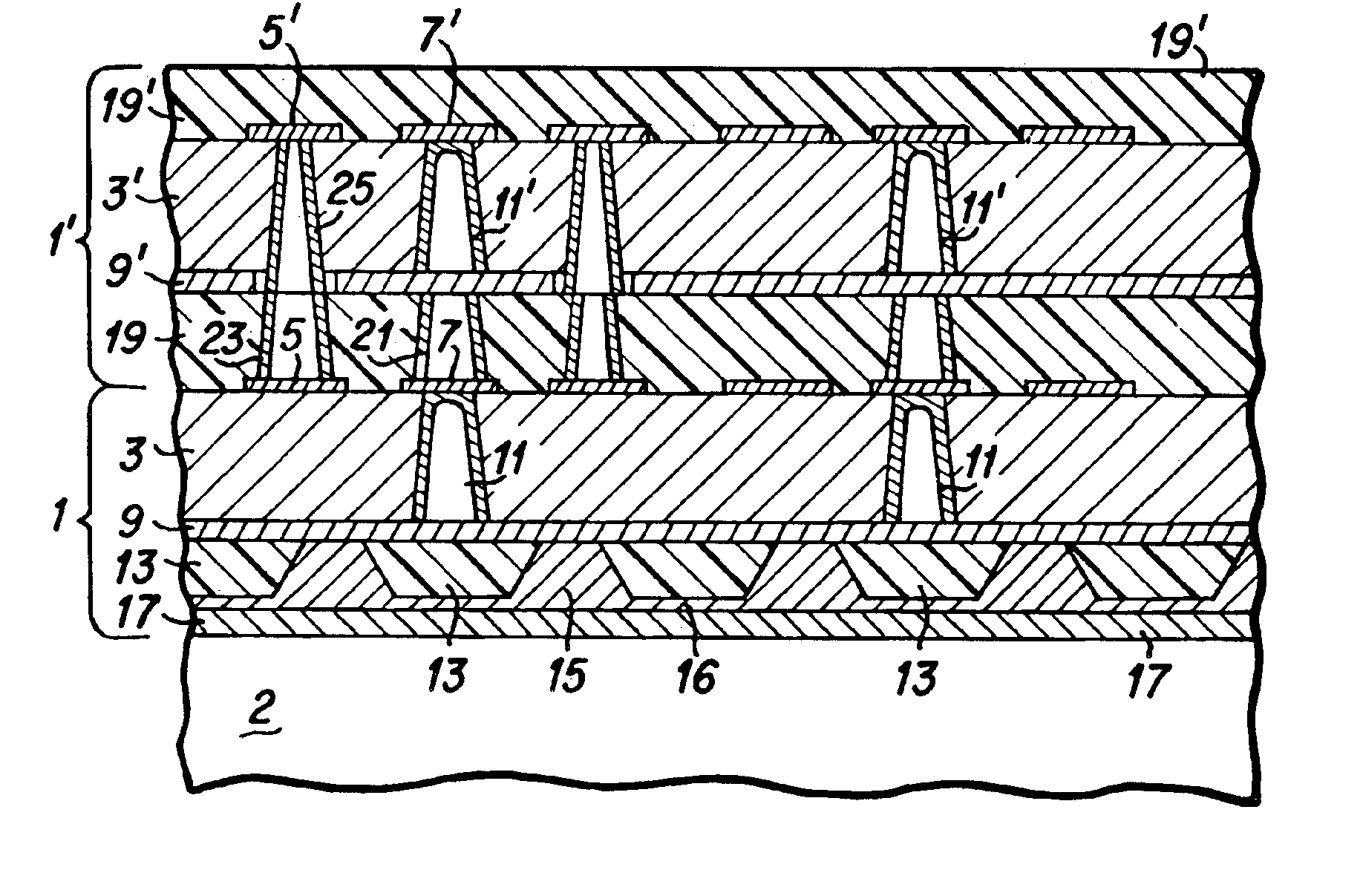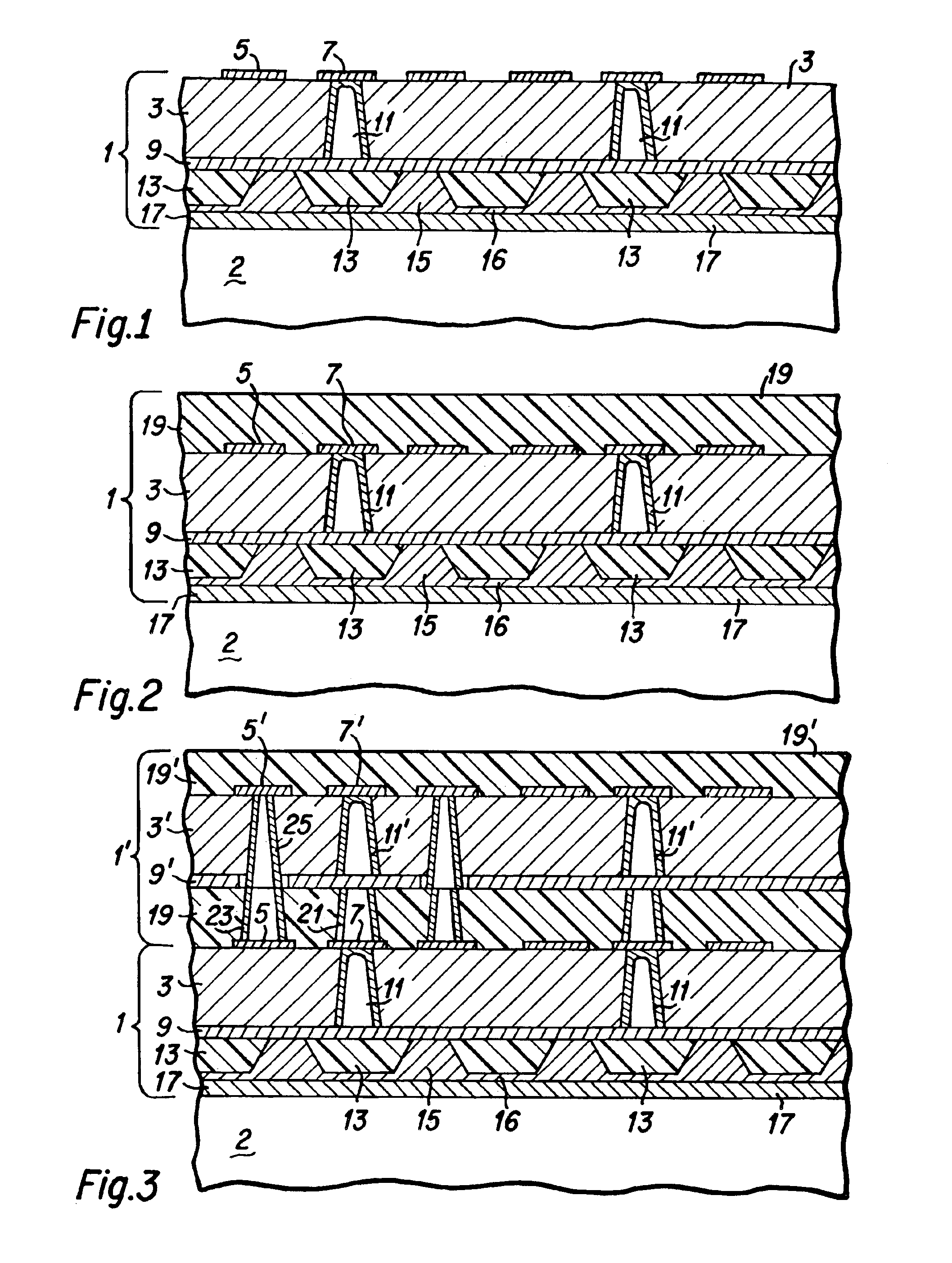Inexpensive wafer level MMIC chip packaging
a monolithic microwave integrated circuit and wafer level technology, applied in the direction of semiconductor devices, semiconductor/solid-state device details, electrical apparatus, etc., can solve the problems of large difference between the respective coefficients of thermal expansion (“cte”) of gaas and inp and the cte of aluminum, and the inability to direct the chip to the carrier by solder or epoxy, etc., to achieve a more reliable package
- Summary
- Abstract
- Description
- Claims
- Application Information
AI Technical Summary
Benefits of technology
Problems solved by technology
Method used
Image
Examples
Embodiment Construction
[0017]MMIC chips intended for multi-chip modules (“MCMs”) are formed in and detached from wafers of semiconductor material using known processes, the details of which are not material to or necessary for an understanding of the present invention. The multi-chip module contains two or more of such MMIC chips that are positioned in respective compartments of the module as prescribed by the designer. Those MMIC chips are typically connected in circuit and function together to accomplish whatever the functions intended by the designer of the MCM. The functional electronic devices, integrated circuit semiconductor devices, formed in and / or on the chip are accessible on upper surface of the chip. Essentially the MCM serves as the package for the MMIC chip. A thin metal layer, referred to as the ground plane layer or as the back metal, is formed on and covers the flat bottom surface of the chip. That back metal is the surface that attaches to the metal carrier, which serves as a floor of t...
PUM
 Login to View More
Login to View More Abstract
Description
Claims
Application Information
 Login to View More
Login to View More - R&D
- Intellectual Property
- Life Sciences
- Materials
- Tech Scout
- Unparalleled Data Quality
- Higher Quality Content
- 60% Fewer Hallucinations
Browse by: Latest US Patents, China's latest patents, Technical Efficacy Thesaurus, Application Domain, Technology Topic, Popular Technical Reports.
© 2025 PatSnap. All rights reserved.Legal|Privacy policy|Modern Slavery Act Transparency Statement|Sitemap|About US| Contact US: help@patsnap.com


